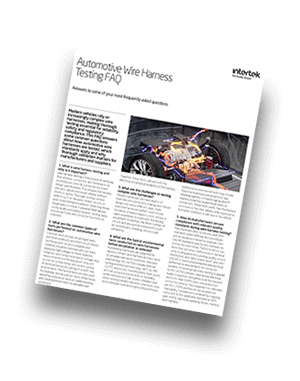Automotive Wire Harness Testing | FAQs

Automotive wire harnesses are becoming increasingly complex as vehicles integrate advanced electronics, sensors, and high-voltage systems. Ensuring they are tested correctly is critical to reliability, safety, and compliance.
Our Automotive Wire Harness Testing Frequently Asked Questions brings together practical information on the types of tests performed, the standards that apply, and the best practices for preparing harnesses for validation. It is a helpful tool for engineers who want a clear, concise reference they can use during design, development, and production.
Inside the FAQ, you will find:
- An overview of why harness testing matters and the risks of skipping or limiting validation
- Descriptions of common test methods including continuity, short-circuit, insulation resistance, voltage drop, tensile pull-out, and vibration testing
- Details on environmental testing such as thermal cycling, humidity, corrosion, and chemical exposure
- Considerations when testing complex or multi-branched harnesses with hundreds of circuits
- Guidance for EV and high-voltage harness testing, including insulation thresholds and endurance requirements for charging connectors
- The role of Design Verification (DV) versus Production Validation (PV) testing in a program lifecycle
- Best practices for submitting harness samples to a test lab to ensure efficient, accurate results
This resource is designed to give you quick answers when you need them, while also pointing to the standards and methods that drive compliance. Whether you are working on an ICE platform, hybrid system, or full EV program, this FAQ will help you confirm that your harness designs are tested to perform in the environments they will face.
To gain a strategic advantage in the market, download your free copy right now by simply filling out the form below.

